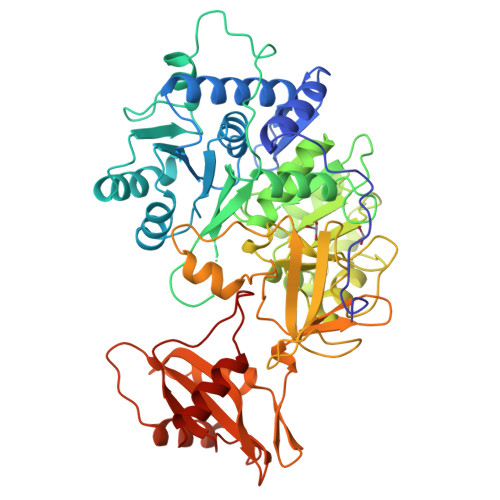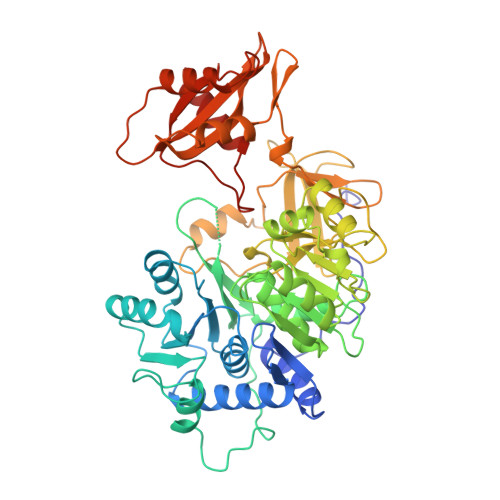Structural basis for the inhibition of firefly luciferase by a general anesthetic.
Franks, N.P., Jenkins, A., Conti, E., Lieb, W.R., Brick, P.(1998) Biophys J 75: 2205-2211
- PubMed: 9788915
- DOI: https://doi.org/10.1016/S0006-3495(98)77664-7
- Primary Citation of Related Structures:
1BA3 - PubMed Abstract:
The firefly luciferase enzyme from Photinus pyralis is probably the best-characterized model system for studying anesthetic-protein interactions. It binds a diverse range of general anesthetics over a large potency range, displays a sensitivity to anesthetics that is very similar to that found in animals, and has an anesthetic sensitivity that can be modulated by one of its substrates (ATP). In this paper we describe the properties of bromoform acting as a general anesthetic (in Rana temporaria tadpoles) and as an inhibitor of the firefly luciferase enzyme at high and low ATP concentrations. In addition, we describe the crystal structure of the low-ATP form of the luciferase enzyme in the presence of bromoform at 2.2-A resolution. These results provide a structural basis for understanding the anesthetic inhibition of the enzyme, as well as an explanation for the ATP modulation of its anesthetic sensitivity.
Organizational Affiliation:
Biophysics Section, The Blackett Laboratory, Imperial College of Science, Technology and Medicine, London, England. n.franks@ic.ac.uk

















